Smoked Beef Brisket
Smoked Beef Brisket is the perfect special occasion fall-apart meat for a weekend when you have a full day at home. Follow our step-by-step directions to smoke this tender beef low and slow! This one gets rave reviews!
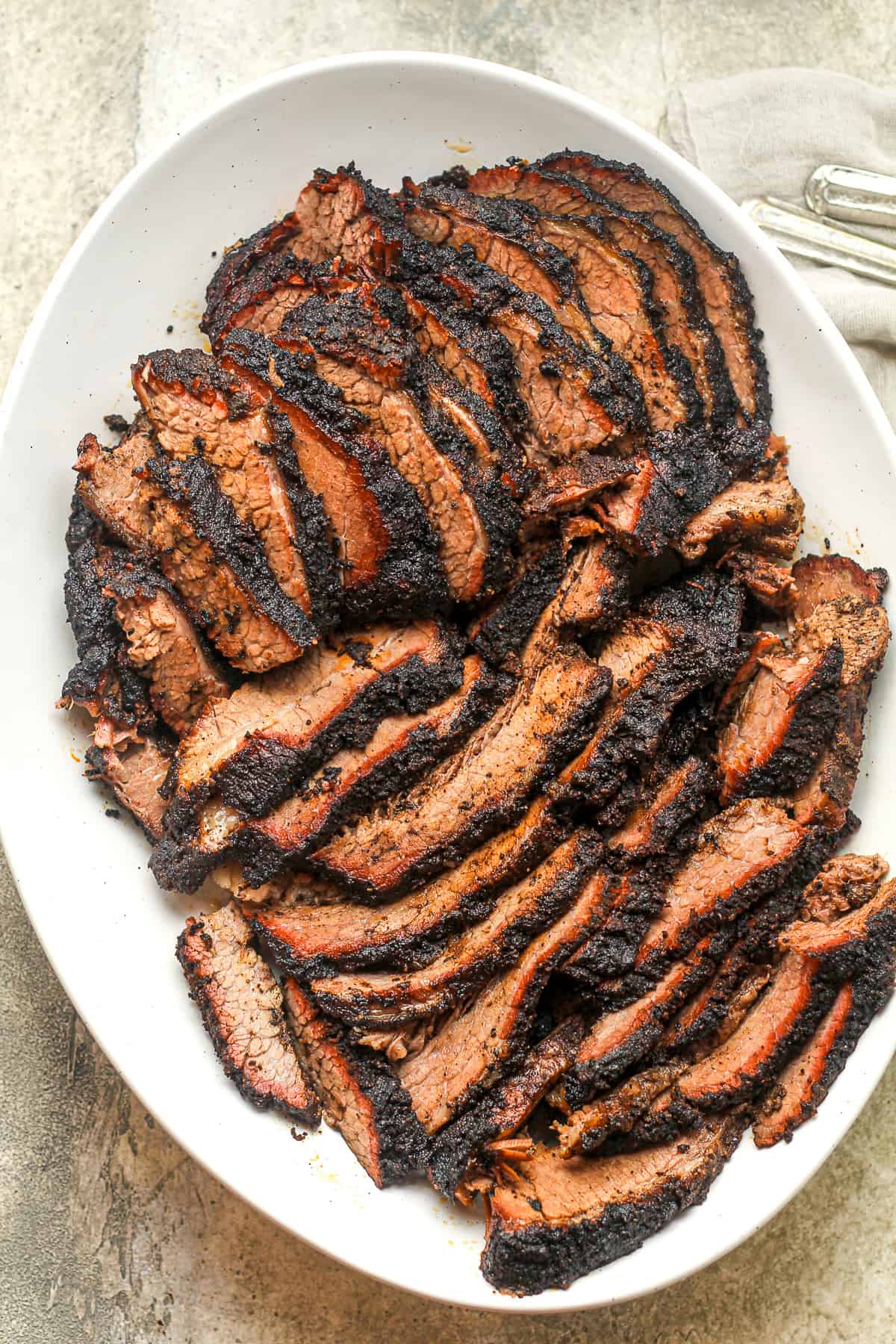
Pellet Smoked Brisket
Beef brisket is a versatile cut and can be prepared in various ways, including smoking, braising, roasting, or even sous-vide cooking. When slow-cooked properly, it becomes tender, and juicy, and develops a rich, beefy flavor.
Smoking is our favorite way to cook beef brisket, and we enjoy using our Memphis Smoker (a pellet grill) for this recipe. It’s super easy to use and mostly hands-off. I recommend spending a day outdoors on a nice cool day – smelling the delicious aroma, reading a good book, and spending a nice, quiet day.
This brisket recipe was fine-tuned by our son, Josh, who has become quite the Grill Master. When I shared how my hubby and I were going to cook this chunk of meat, he quickly explained how he’d cook it and I took notes (and we even FaceTimed him). Lo and behold, a perfectly cooked brisket was the end result! Thanks Josh!
Why This Recipe Works:
- SIMPLE TO MAKE – While this beef brisket recipe involves a long smoke at a low temperature, the process is quite simple.
- DELICIOUS – This is truly the best brisket recipe (but you know, I’m biased) with a nice smoky flavor.
- IMPRESSIVE – A tender brisket with a beautiful smoke ring will impress your family and friends, trust me.
- FEEDS A CROWD – This juicy brisket is perfect to feed a large group. Plan ahead and start the process early.
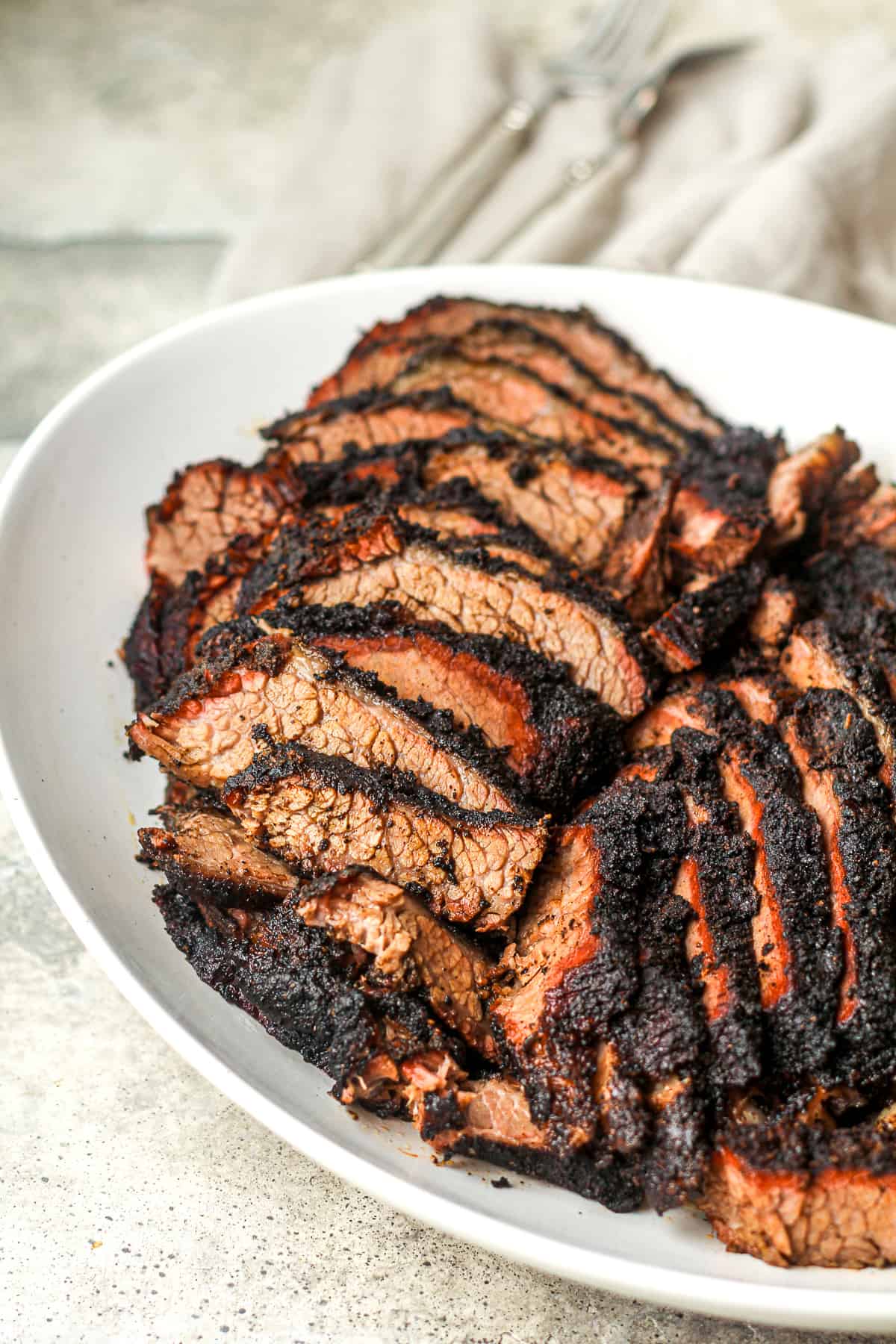
Ingredients Needed for Smoked Brisket Recipe:
- Brisket – We smoked a whole brisket, using both the point and flat cuts of the beef.
- Dijon Mustard – Dijon mustard is the “glue” to get the seasoning to stick to the brisket. Make sure you use plenty and slather it all over the beef.
- Seasoning – We used Meat Church Seasoning for this smoke, but often use our tried and true Homemade BBQ Rub – a combo of brown sugar, kosher salt, black pepper, paprika, garlic powder, and cayenne pepper. Make sure you use plenty of the brisket rub to achieve a truly great bark.
- Onions & Garlic – Add some onions and garlic cloves to a disposable pan and fill with water. This adds extra flavor to the beef.
- Beef Broth – We fill a spray bottle with beef broth and spray the meat every two hours. This is optional but recommended.
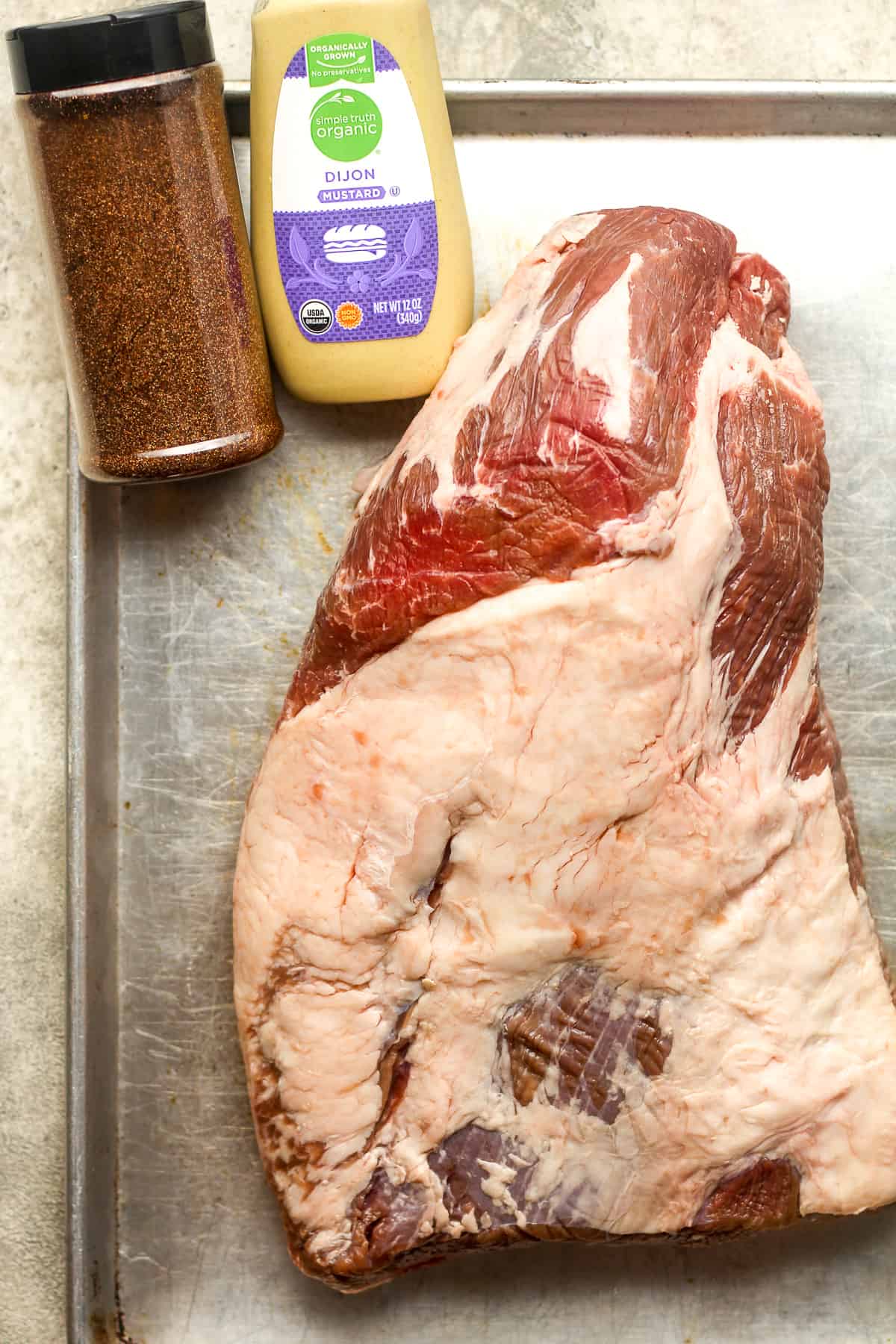
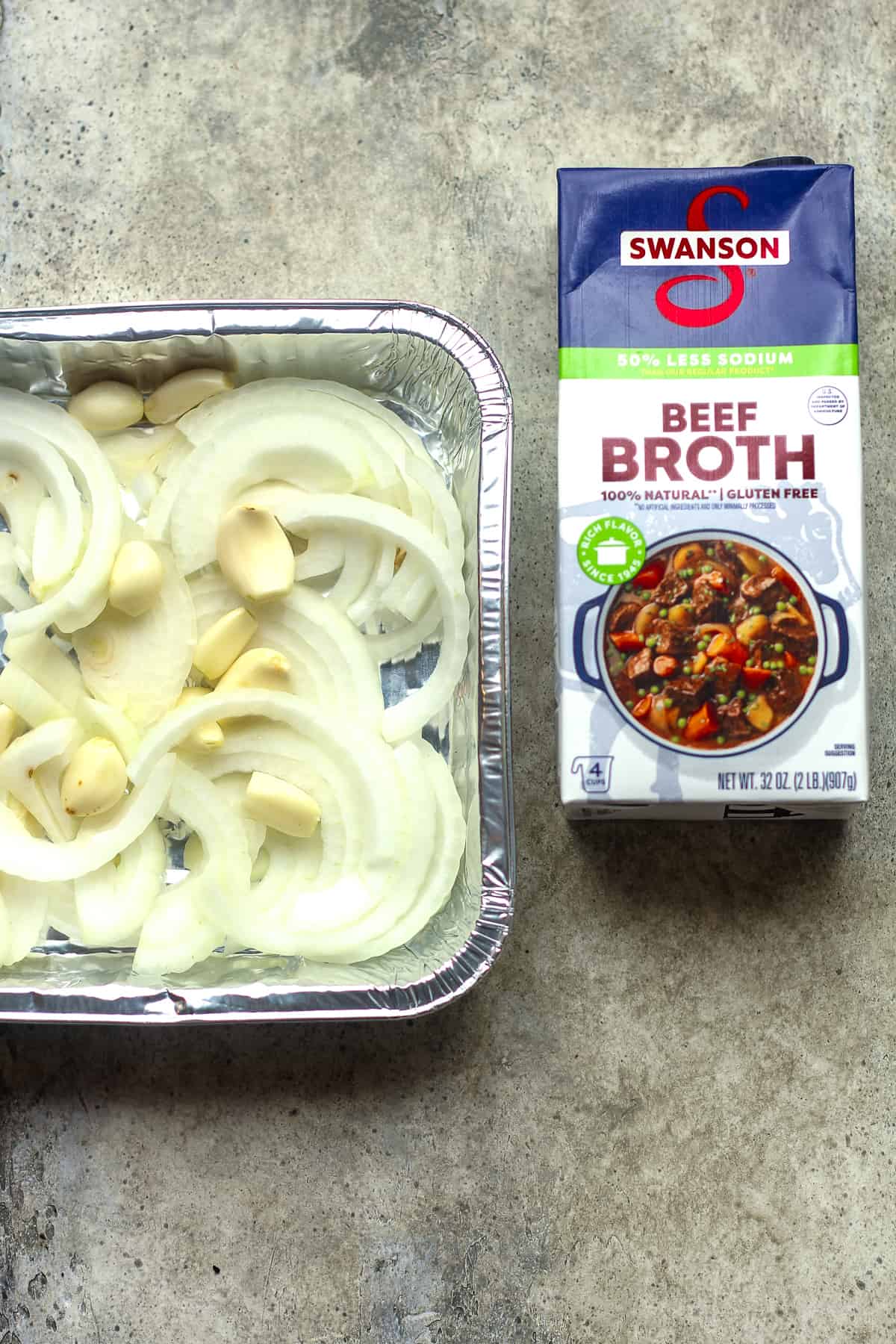
How to make Smoked Beef Brisket:
Step 1
Select brisket. Purchase a whole brisket (we like Prime brisket) from your local butcher. You’ll want to make sure the point and flat muscle are included and that there is plenty of fat marbling throughout.
Have your butcher trim the brisket as needed. (I don’t trim ours but many feel this is important. I’d ask your local butcher.)
Step 2
Prep brisket. Place the brisket on a large sheet pan. Add Dijon Mustard to the entire surface area of the brisket. Then season liberally with your favorite seasoning blend. We like Meat Church or our Homemade Dry Rub Seasoning.
Let the brisket sit on your countertop for approximately 45 minutes or until it comes close to room temperature.
Step 3
Prep smoker. Light your smoker to 250 degrees F. If using a pellet smoker, add either oak or hickory pellets to the bin. Maintain a constant temperature of your smoker during the smoke.
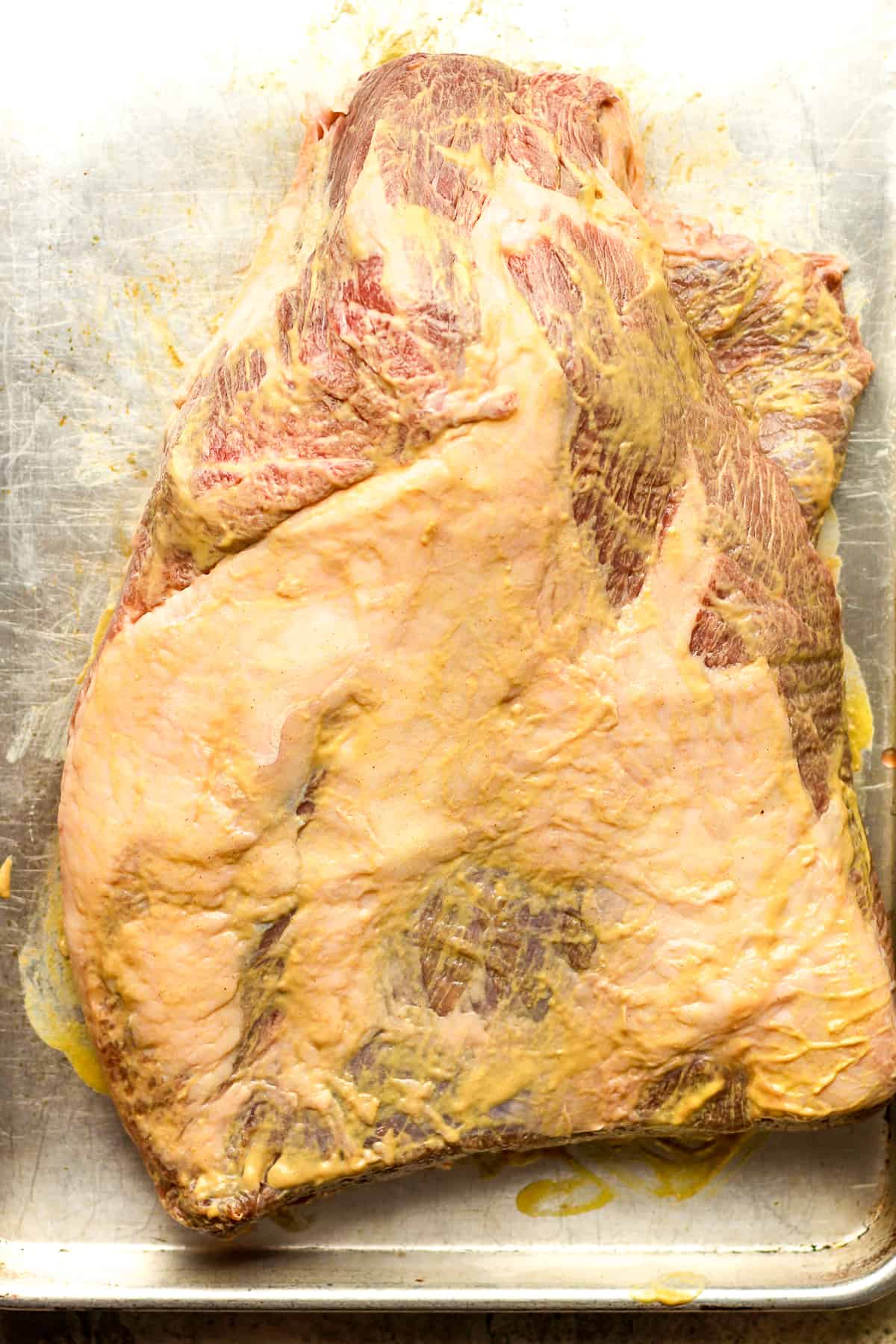
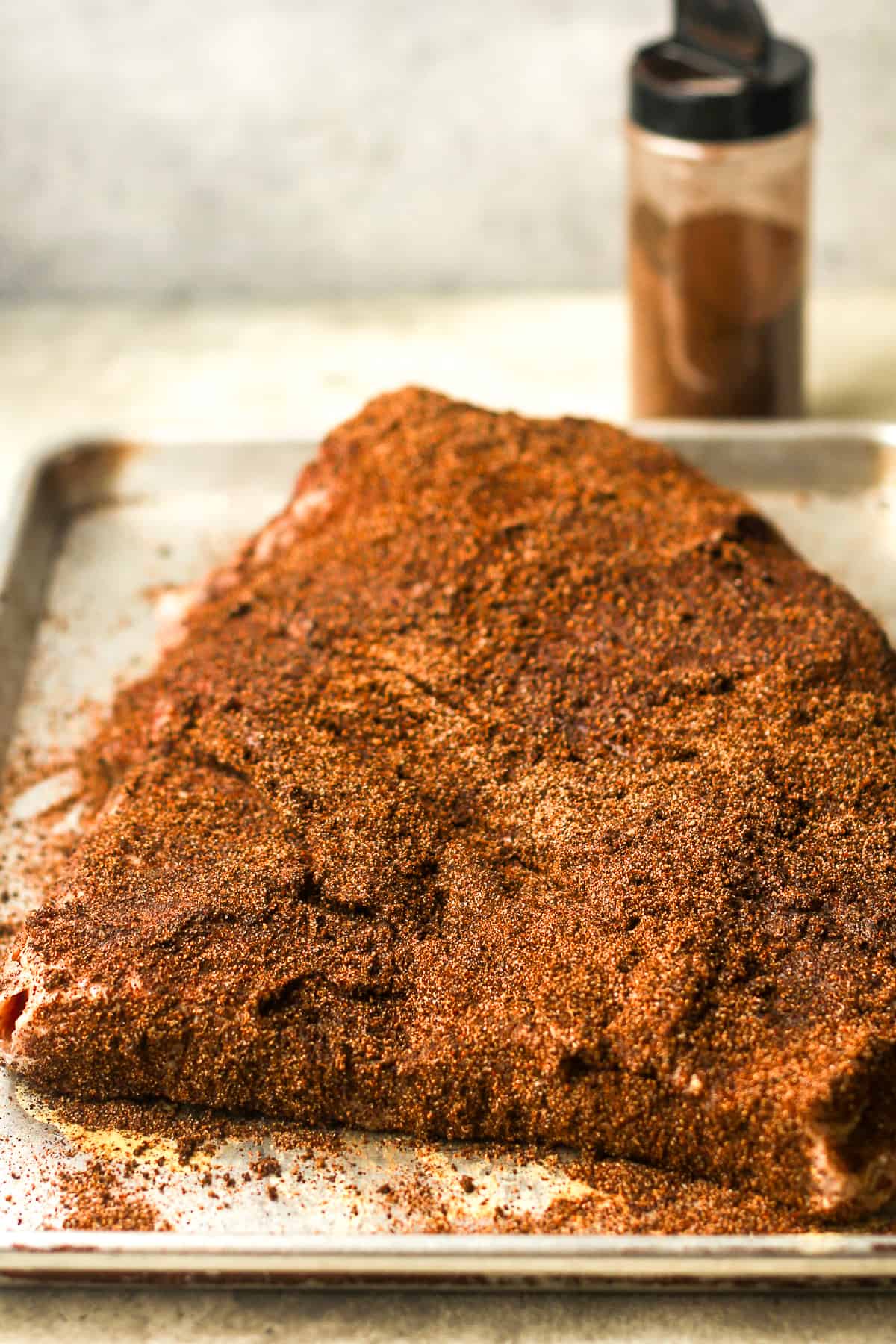
Step 4
Place brisket on smoker. Place brisket, fat side down, on the smoker. If you have temperature probes, use them as well.
Step 5
Add a pan of onions and garlic. Add some sliced onions and diced garlic to a disposable tin pan. Fill it with water. Then place pan on the grates next to the brisket.
Step 6
Smoke. Smoke brisket at 250 degrees until the brisket reaches the stall (anywhere between 165 degrees and 175 degrees F).
Spray brisket with beef broth every two hours or so.
NOTE: You may need to add more seasoning during the cooking process if the initial seasoning looks clumpy.
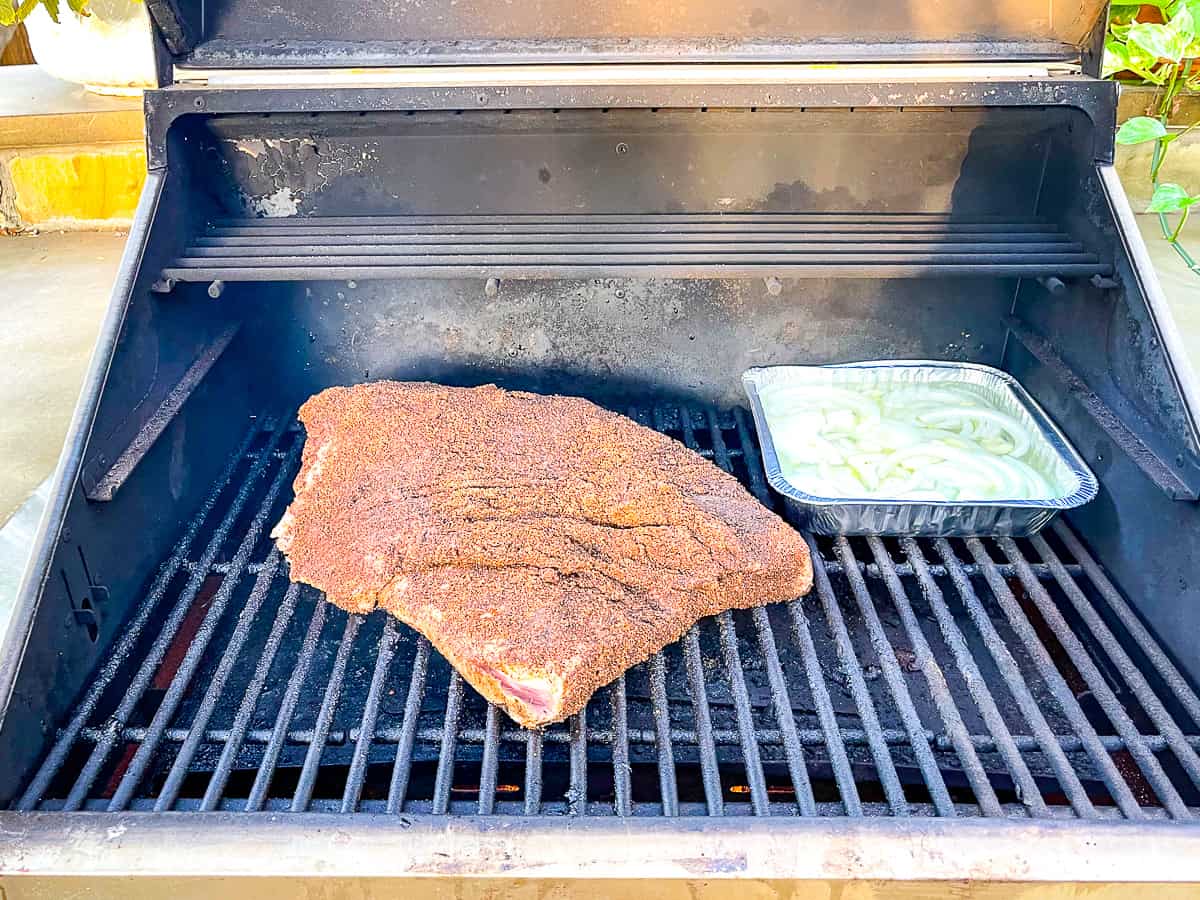
Step 7
Wrap meat. When you hit the stall, carefully remove brisket and wrap it completely in aluminum foil. Then transfer the wrapped brisket to a throwaway tin pan and place back on the smoker.
Step 8
Continue smoking. Continue smoking the brisket until the internal temperature reaches approximately 200 degrees.
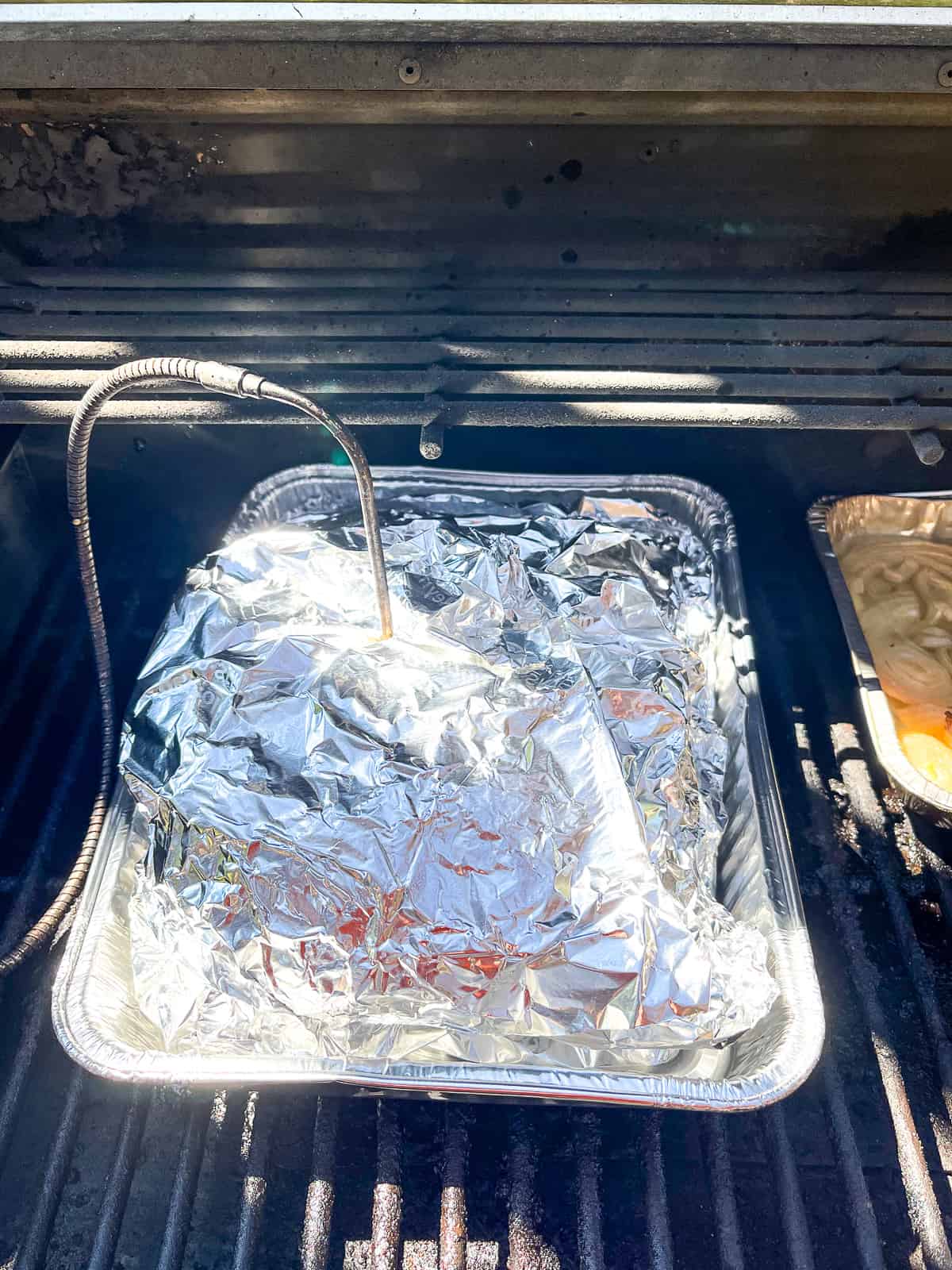
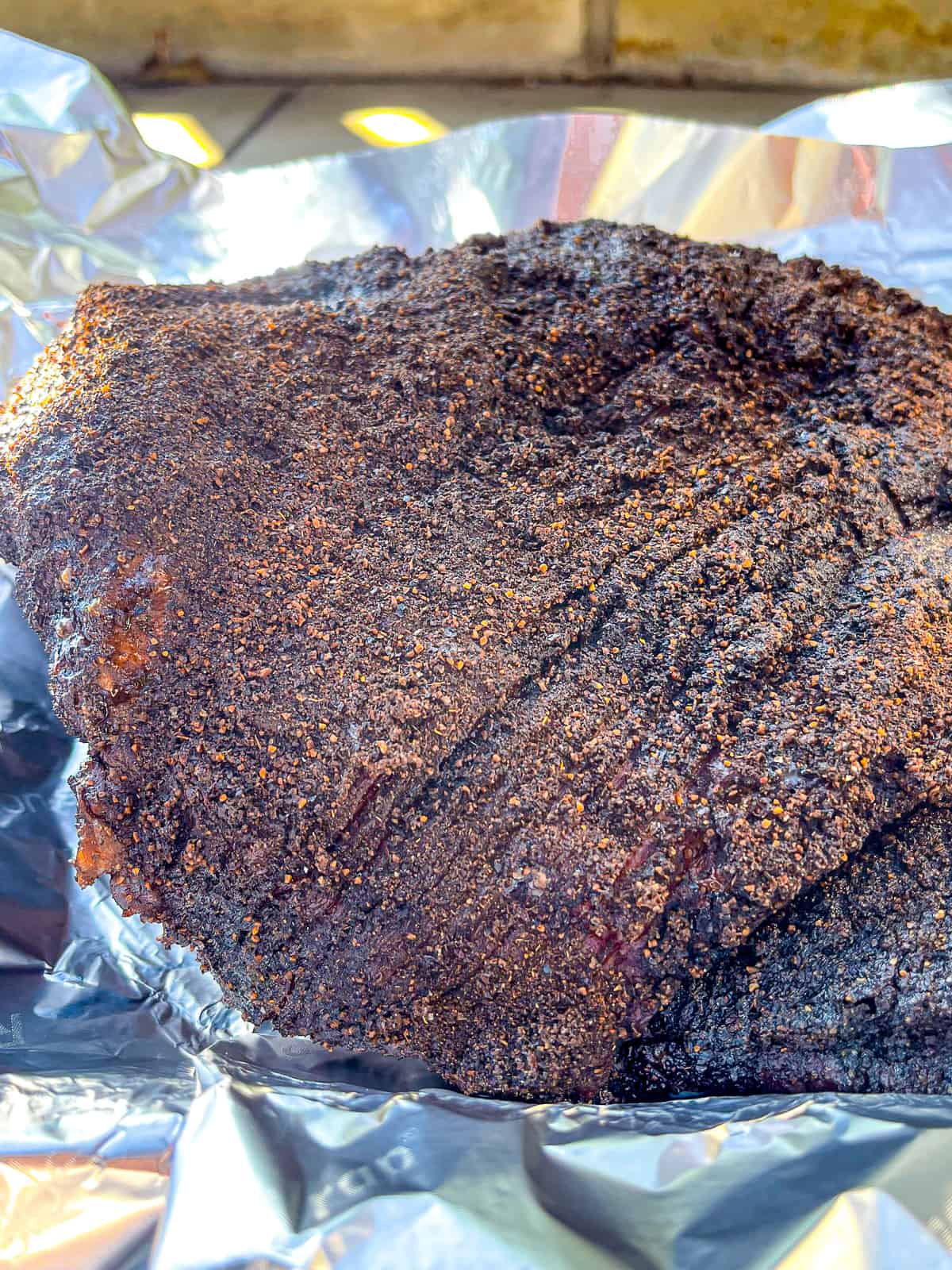
Step 9
Rest meat. Let the brisket rest for approximately 30 minutes. This will allow for the juices to be redistributed in the meat.
Step 10
Slice brisket. Divide the brisket by slicing the meat between the point and the flat.
Use a sharp knife or a serrated-edge knife to slice the brisket against the grain. Note that the point and the flat may need to be sliced differently as there is an overlapping muscle in the meat.
PRO-TIP: Take a good look at the raw brisket (before adding mustard and seasoning) to determine the direction of the grain.
Step 11
Serve smoked beef brisket. Serve gorgeous slices of your perfect smoked brisket with your choice of sides. See below for choices!
What to serve with Smoked Beef Brisket:
- POTATOES – Try our Holiday Mashed Potatoes, Instant Pot Garlic Mashed Potatoes, or Cheesy Hasselback Potatoes with Bacon. We also love a Baked Potato Bar!
- SALAD – Pair with our Fall Harvest Salad, Spinach Salad with Honey Dijon Dressing, Potato Salad with Miracle Whip, or Crunchy Asian Cabbage Salad.
- OTHER – Cowboy Baked Beans, Lemon Orzo Pasta Salad, Creamy Mushroom Risotto, or Crispy Parmesan Brussels Sprouts
- BREAD – Try some delicious Brioche Dinner Rolls, Mexican Cornbread Muffins, or Garlic Sourdough Bread!
How to use Leftover Brisket:
- Brisket Sandwich: Slice the brisket thinly and pile it onto a bun or between slices of bread. Add your favorite condiments and toppings like coleslaw, pickles, and barbecue sauce for a classic brisket sandwich.
- Brisket Tacos: Warm up the brisket and serve it in soft tortillas with salsa, chopped onions, cilantro, and a squeeze of lime for tasty brisket tacos.
- Brisket Quesadillas: Create a quesadilla by sandwiching slices of brisket between tortillas along with shredded cheese. Cook until the cheese is melted and serve with guacamole and sour cream.
- Brisket Pizza: Use slices of brisket as a unique pizza topping. Combine it with mozzarella cheese, barbecue sauce, red onions, and bell peppers for a flavorful brisket pizza.
- Brisket Hash: Chop the brisket into small pieces and sauté it with diced potatoes, onions, and bell peppers for a hearty brisket hash. Serve with eggs for a satisfying breakfast or brunch.
Other Smoked Meat Recipes:
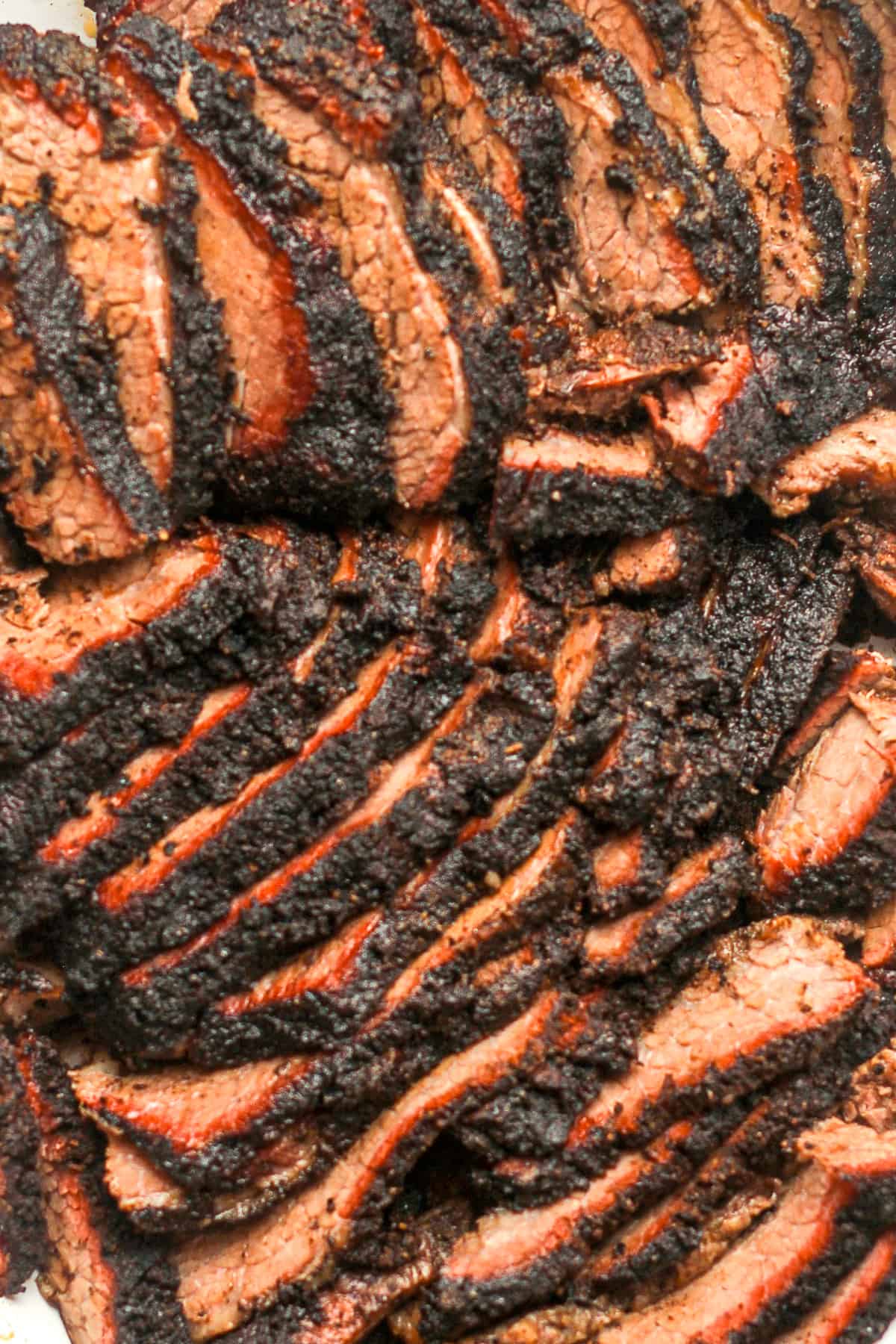
Recipe FAQs:
A beef brisket is a specific cut of meat obtained from the breast or lower chest area of a cow. It is one of the most well-known and widely used cuts of beef. Beef brisket is often associated with barbecue and slow-cooking methods due to its tough texture and the need for long, slow cooking to make it tender and flavorful.
Flat Cut (First Cut or Lean Brisket) – This portion of the beef brisket is leaner and more uniform in shape. It has a thin layer of fat on one side and is often preferred for its consistent thickness, making it easier to cook evenly. It’s a popular choice for slicing thin for sandwiches or serving as a main dish.
Point Cut (Second Cut or Fatty Brisket) – The point cut of beef brisket is more heavily marbled with fat, making it juicier and more flavorful when cooked. It can be more irregular in shape and contains a higher fat content than the flat cut. This cut is often used in barbecue and smoked brisket recipes, as the extra fat helps keep the meat moist during the long cooking process.
This debate is a long-standing one among barbecue enthusiasts. The choice ultimately comes down to personal preference.
Fat Side Up – Smoking brisket with the fat side up means that the layer of fat on the brisket is facing the heat source or fire. Advocates of this method argue that the fat acts as a natural barrier, protecting the meat from direct heat and helping to baste the brisket as it melts during cooking. This can potentially result in a juicier final product.
Fat Side Down: Smoking brisket with the fat side down means that the fat layer is in direct contact with the grates or cooking surface. Proponents of this method argue that it helps to insulate the meat from the intense heat at the bottom of the smoker, preventing the meat from becoming too charred or overcooked on the bottom. They believe it also allows for better smoke penetration from the top.
The amount of seasoning you should use when smoking a beef brisket depends on your personal taste preferences and the size of the brisket. There are no hard and fast rules but using more seasoning will help develop the beloved bark.
The bark is the dark, flavorful, and slightly crispy outer crust that forms during the smoking process. Creating a flavorful and visually appealing bark on smoked brisket is a key goal for many pitmasters.
Several factors determine achieving a nice bark including 1) a generous seasoning, 2) a low and even temperature, 3) a long cook, and 4) spritzing the beef (with broth).
The stall is a phenomenon that occurs during the smoking process of large cuts of meat, such as beef brisket or pork shoulder. It is a crucial phase in the smoking process that can puzzle and sometimes frustrate barbecue enthusiasts. The stall typically occurs at a specific internal temperature (anywhere around 160 degrees or higher) and can last for several hours.
The stall normally occurs because of evaporative cooling. Google it!
There are many tactics to deal with the stall. Our preference is to wrap the meat in foil and place in a disposable pan. Return to the smoker and cook until done. Oh, and be patient!
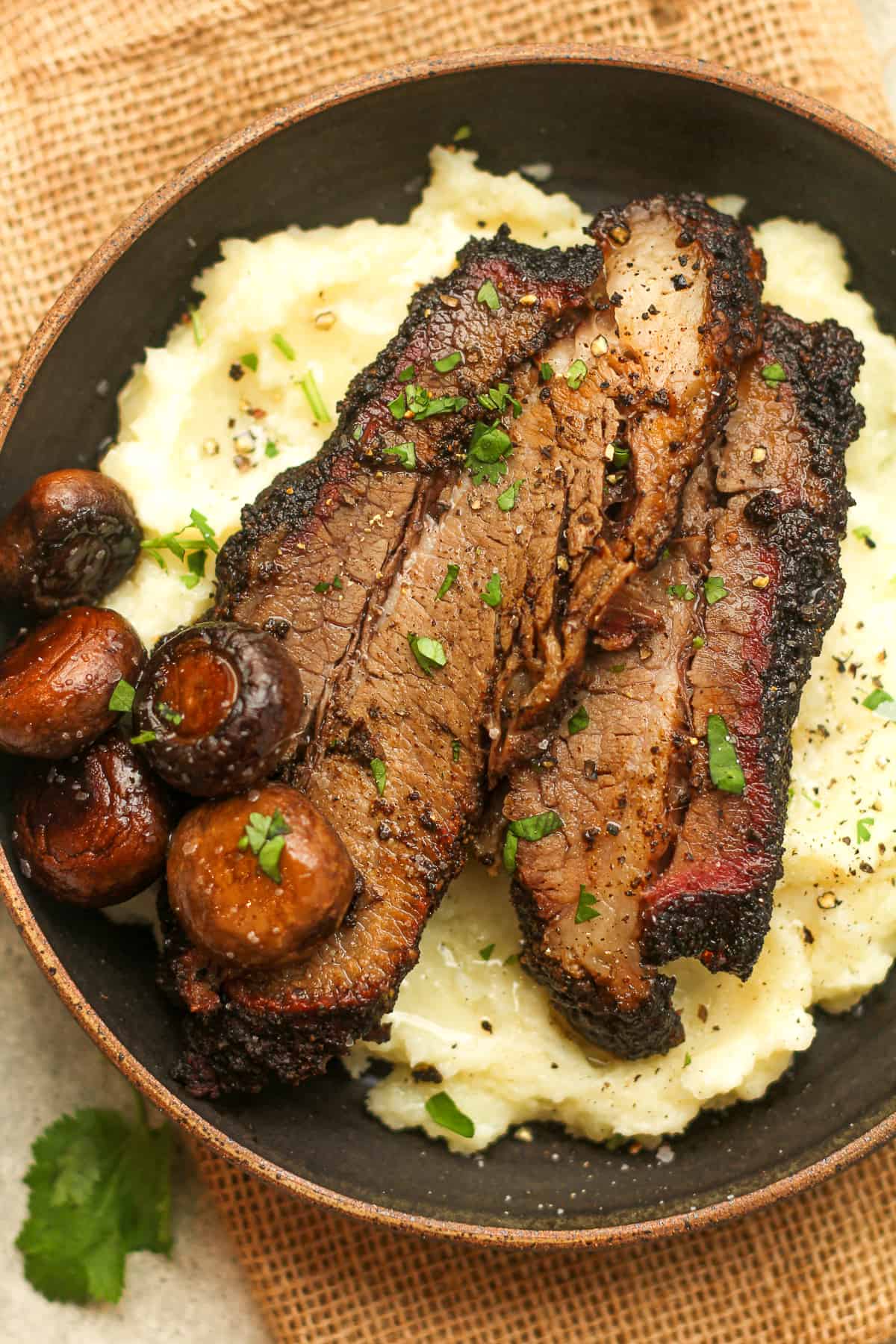
Kitchen Tools Used: (affiliate links)
xoxo ~Sue
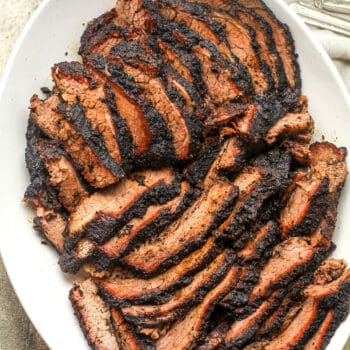
Smoked Beef Brisket
Ingredients
- 8-10 pounds beef brisket
- 1/2 cup Dijon Mustard – or enough to coat
- Meat Church – enough to liberally season all sides of the brisket
- 1 large yellow onion – sliced
- 1 bulb garlic – peeled
- 2 cups beef broth
Instructions
- Select brisket. Purchase a whole brisket (we like Prime brisket) from your local butcher. You'll want to make sure the point and flat muscle are included and that there is plenty of fat marbling throughout.
- Have your butcher trim the brisket as needed. (I don't trim ours but many feel this is important. I'd ask your local butcher.)
- Prep brisket. Place the brisket on a large sheet pan. Add Dijon Mustard to the entire surface area of the brisket. Then season liberally with your favorite seasoning blend. We like Meat Church or our Homemade Dry Rub Seasoning.Let the brisket sit on your countertop for approximately 45 minutes or until it comes close to room temperature.
- Prep smoker. Light your smoker to 250 degrees F. If using a pellet smoker, add either oak or hickory pellets to the bin. Maintain a constant temperature of your smoker during the smoke.
- Place brisket on smoker. Place brisket, fat side down, on the smoker. If you have temperature probes, use them as well.
- Add a pan of onions and garlic. Add some sliced onions and diced garlic to a disposable tin pan. Fill it with water. Then place pan on the grates next to the brisket.
- Smoke. Smoke brisket at 250 degrees until the brisket reaches the stall (anywhere between 165 degrees and 175 degrees F).Spray brisket with beef broth every two hours or so.
- NOTE: You may need to add more seasoning during the cooking process if the initial seasoning looks clumpy.
- Wrap meat. When you hit the stall, carefully remove brisket and wrap it completely in aluminum foil. Then transfer the wrapped brisket to a throwaway tin pan and place back on the smoker.
- Continue smoking. Continue smoking the brisket until the internal temperature reaches approximately 200 degrees.
- Rest meat. Let the brisket rest for approximately 30 minutes. This will allow for the juices to be redistributed in the meat.
- Slice brisket. Divide the brisket by slicing the meat between the point and the flat.Use a sharp knife or a serated edge knife to slice the brisket against the grain. Note that the point and the flat may need to be sliced differently as there is an overlapping muscle in the meat.
- PRO-TIP: Take a good look at the raw brisket (before adding mustard and seasoning) to determine the direction of the grain.
- Serve smoked beef brisket. Serve gorgeous slices of your perfect smoked brisket with your choice of sides.
- PLEASE READ all the FAQs on the blog post before making this brisket recipe!
Notes
Point Cut (Second Cut or Fatty Brisket) – The point cut of beef brisket is more heavily marbled with fat, making it juicier and more flavorful when cooked. It can be more irregular in shape and contains a higher fat content than the flat cut. This cut is often used in barbecue and smoked brisket recipes, as the extra fat helps keep the meat moist during the long cooking process.

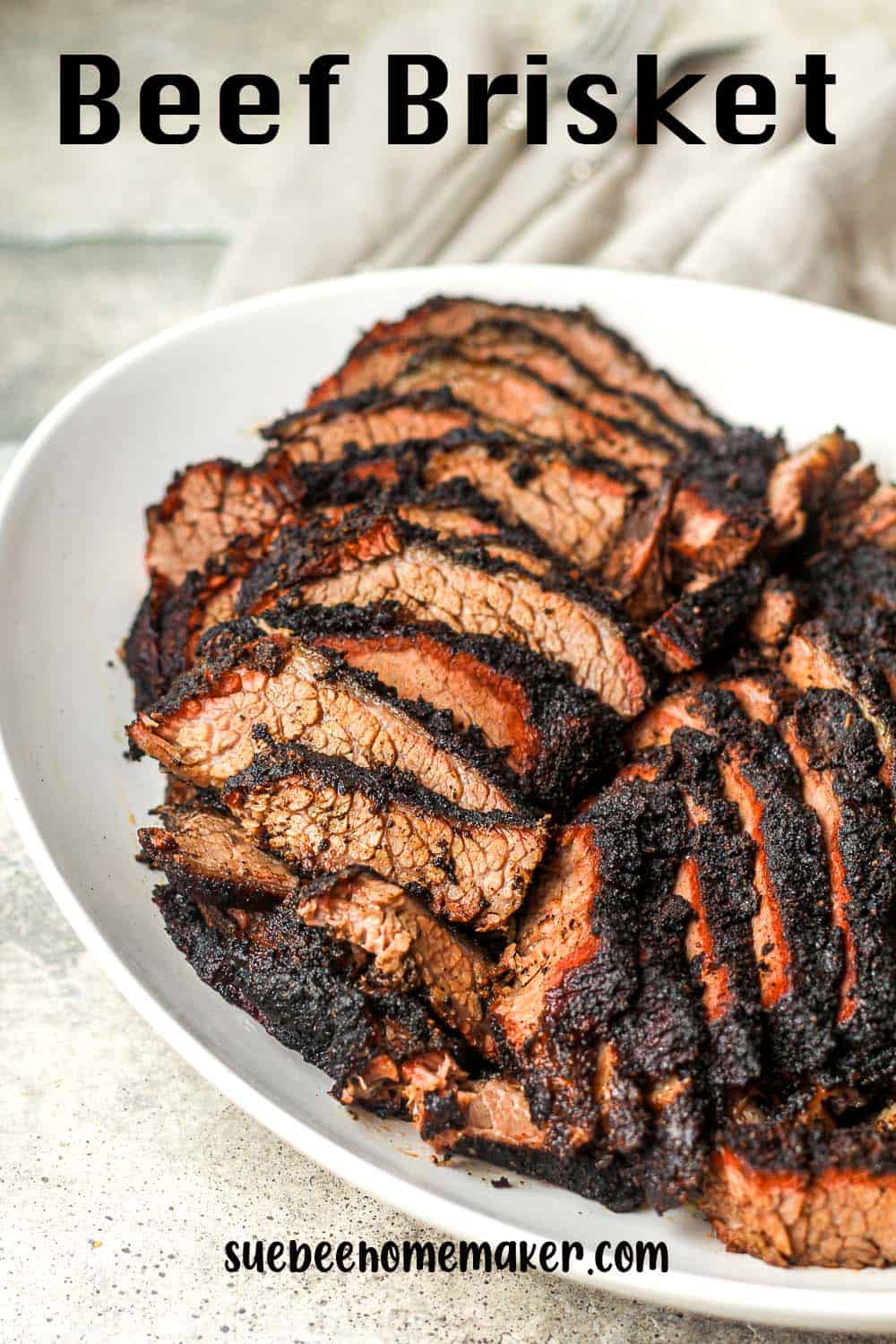
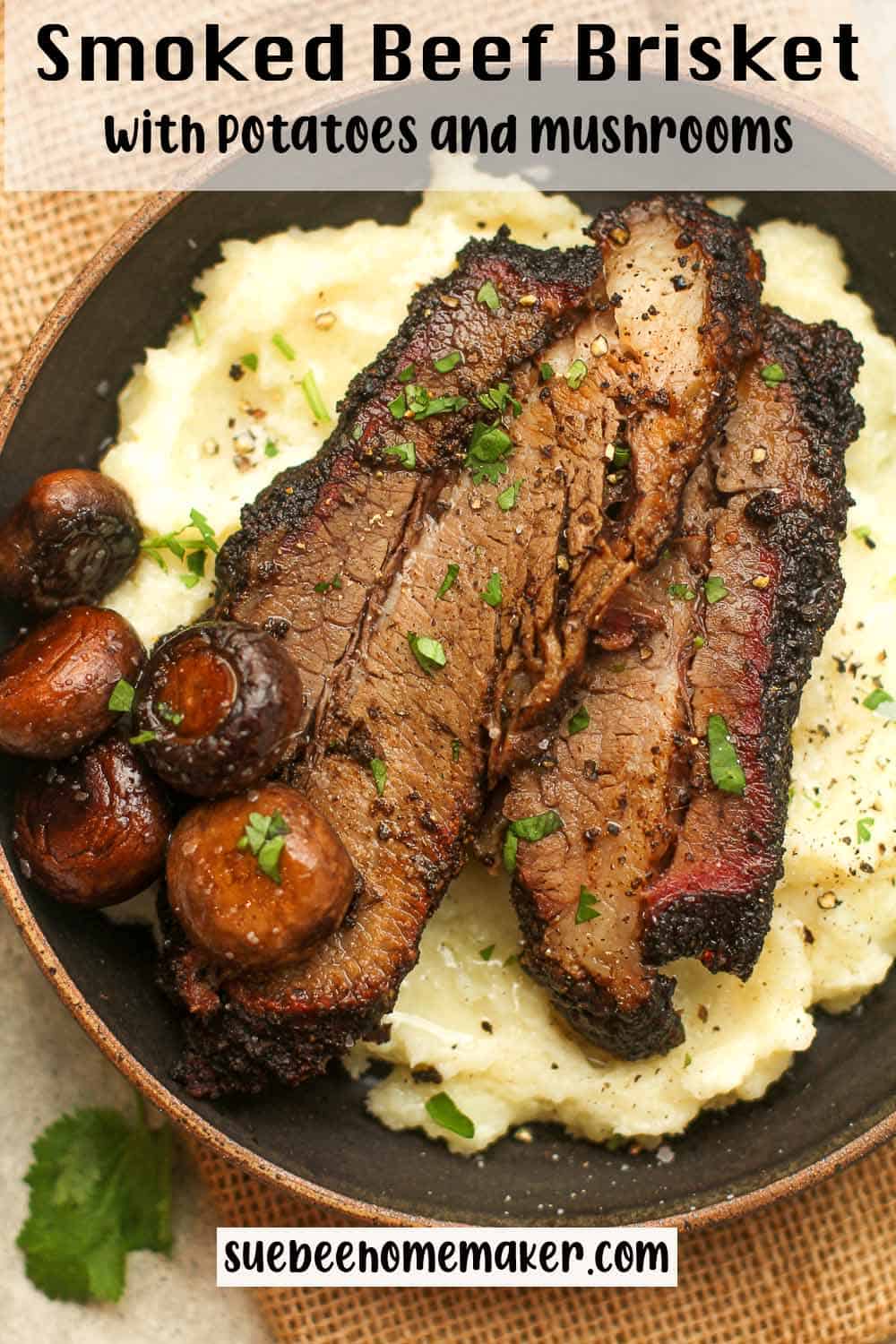
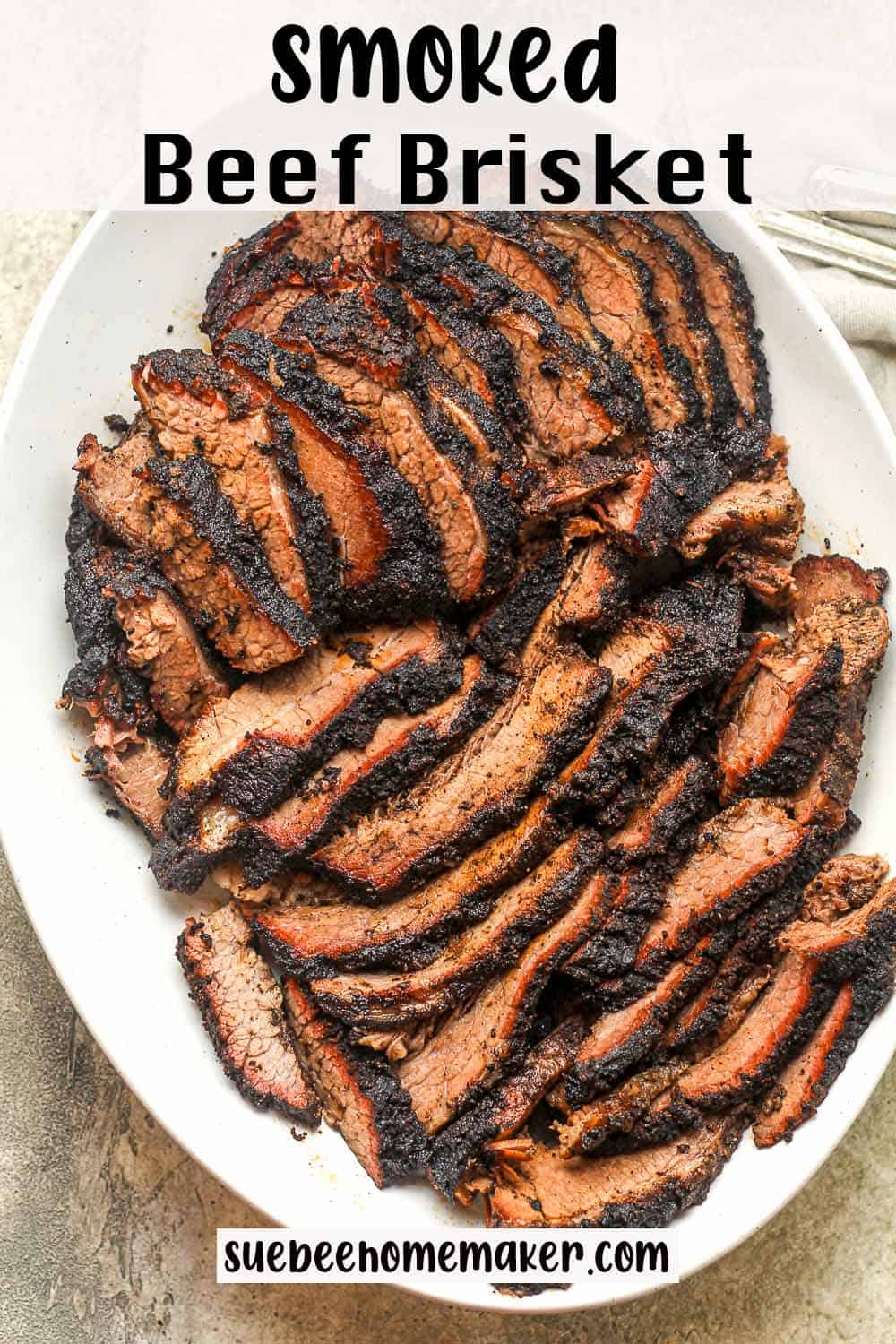
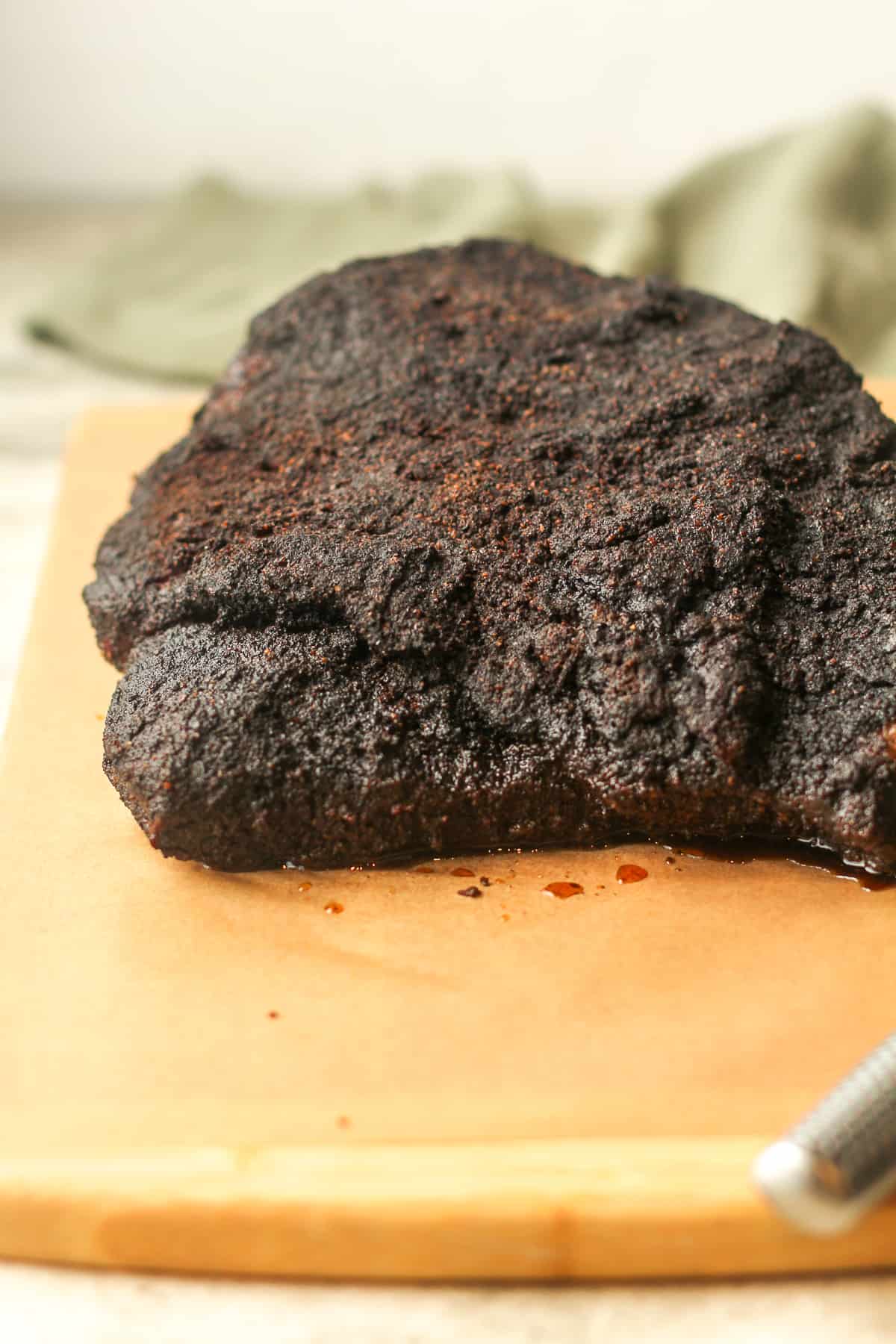
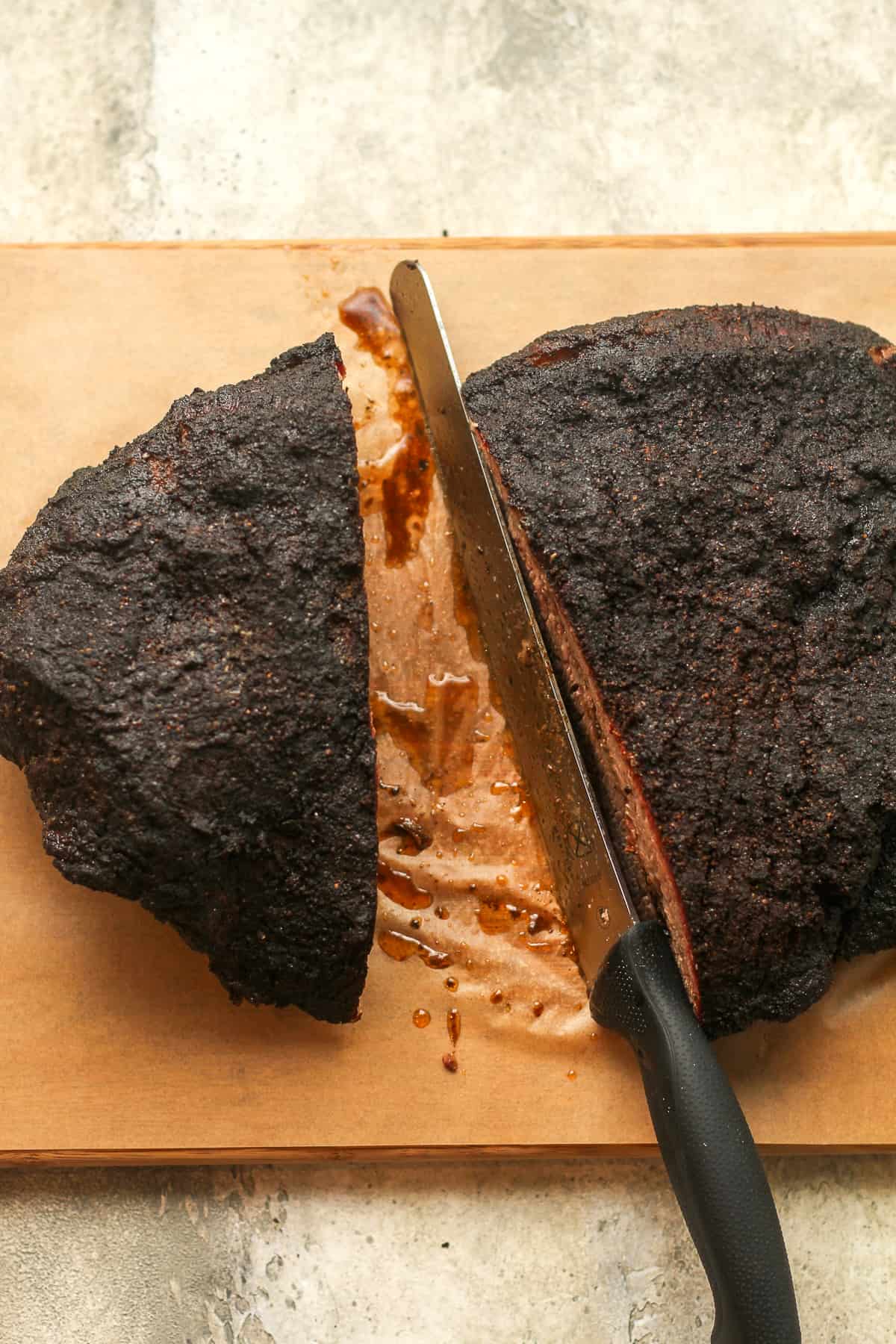
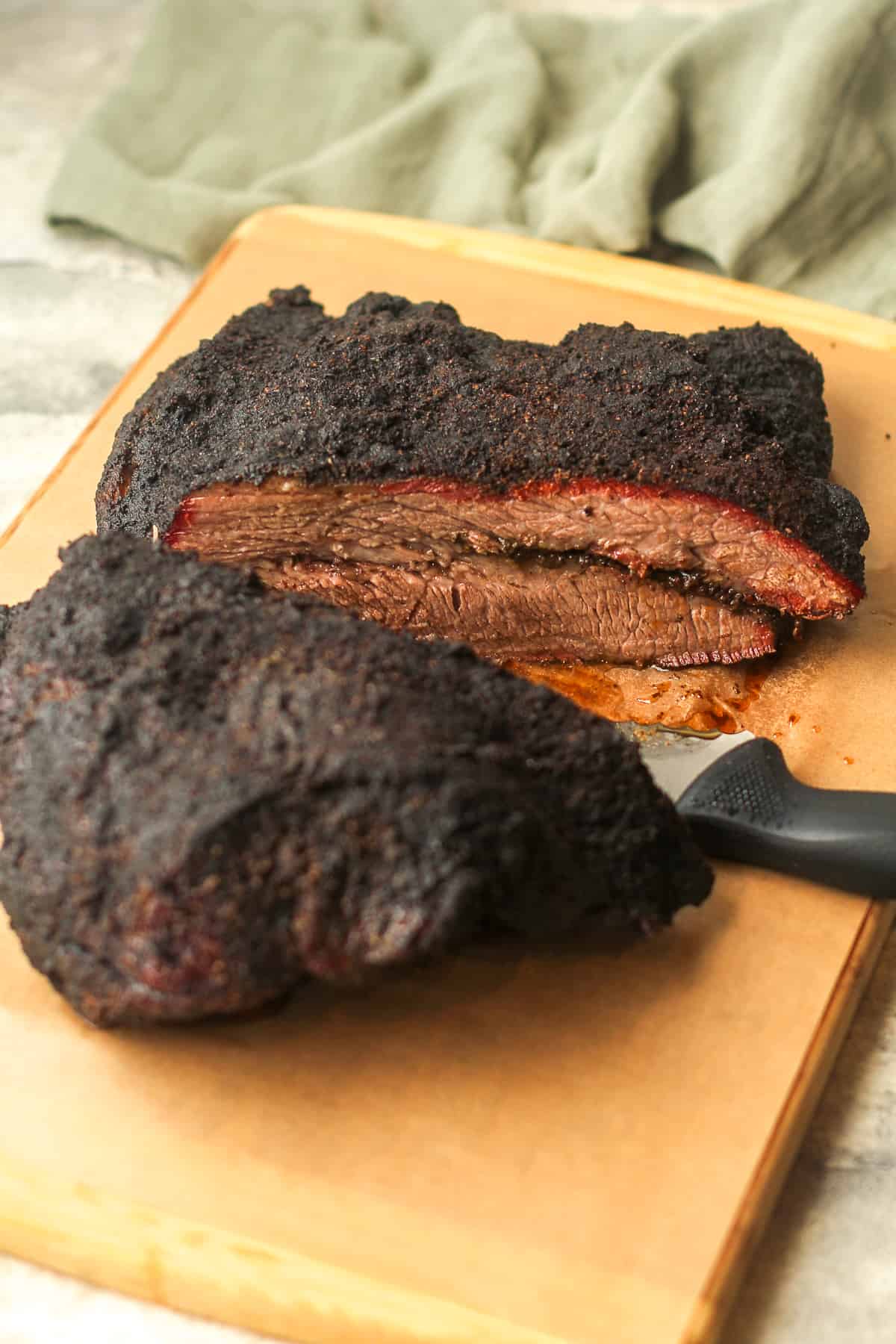
For sure, the best brisket ever! Amazing! Pro Tip add the Homemade Dry rub seasoning! For a special side, try the Crunchy Asian Cabbage Salad!